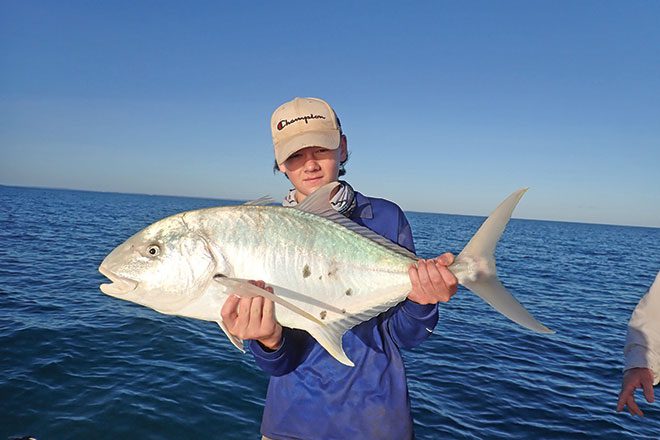Autumn is coming to a close and it definitely shows. trevally
Longtail tuna are tapering off, but mack tuna are still around, and bait is shrinking in size.
So, yes, the usual stuff is happening in Hervey Bay for this time of year.
April had us often chasing trevally, going from school to school of tuna and occasionally finding trevally feeding with the tuna.
It was a heap of fun, though not always easy.
But because the fish were so mobile, the sharks were often far away, thankfully.
In most cases, I saw the trevally under the tuna, using electronics to scan them up and keep us on them.
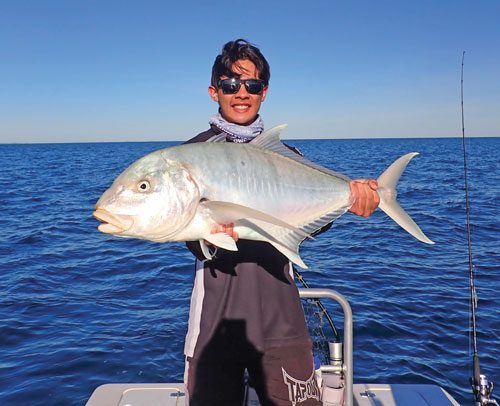
The priority was to keep the lures in their faces.
They move, you move… and hopefully you hook up.
Occasionally, we saw the fish actually break the surface, as tuna would.
There are certain differences in how they break the surface, which indicates a non-tuna species.
The bird activity is somewhat different on trevally too.
I think it reflects on how the trevally feed – this is evident when the birds follow a trevally school that has broken away from the tuna activity.
The locations or depths were never fixed.
Some days we could be with them for one shot, other days it was half a tour.
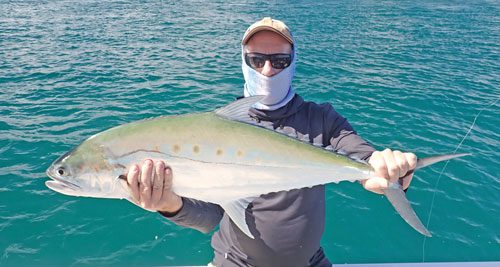
Some days they were fussy, some days they were easy and ate whatever you threw down there.
One thing was certain, the bait was tiny, I rarely saw it.
I think it was a plankton of some sort – zooplanktons such as shrimp possibly, as small crystalline larvae I did see.
I saw some manta ray too, which made it special.
Another thing that kept us entertained was mackerel spinning.
We found it an effective method for the collection of food.
As usual, my technique was to get the lure to the bottom and spin back, rinse and repeat.
If we came upon a school on some ground, a good team would bag a few fish quickly.
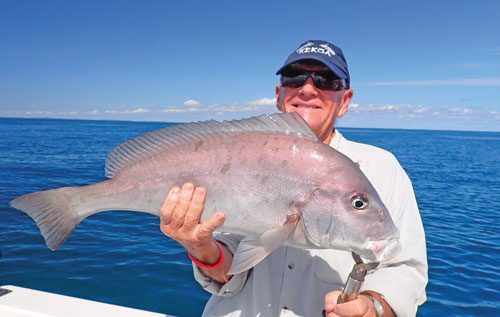
Most were legal sized without the need to measure, whereas the previous month I had to check often.
School mackerel tend to dwell on structure, and I often see them pushing bait down, not up.
From my experience, hitting the bottom is key.
You want to spin the depth they’re in, you don’t want to see them chasing to the boat – hooking fish is better earlier on in the retrieve.
Seeing them is entertainment, though it’s not effective, as most times they don’t commit at the boat.
Keeping that lure bouncing and rocketing off the bottom has other benefits too.
You can hook the occasional reef fish, such as coral trout and nannygai.
The downside to this style of fishing is that you are in areas that hold fish and bait regularly, which means sharks can turn up or are residents.
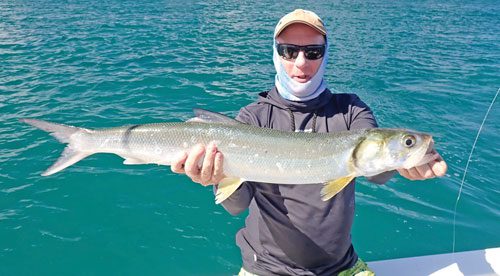
Fortunately, school mackerel are landed quite quickly, even with the ‘light drag’ method I employ for my clients.
You can get away with a few fish before the sharks get agitated and take the tax.
With practice, you’ll learn when a shark shows up.
It’s rarely a surprise when we get attacked these days.
I have learnt to be vigilant.
Even schools of tuna that move regularly can get sharks around them.
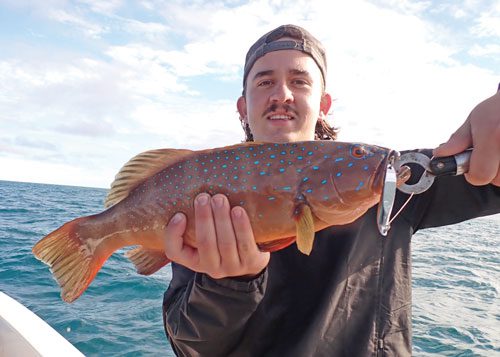
Even in spots that you haven’t seen tuna recently.
If the bust-ups are big enough, they will draw in local sharks from areas close by.
If it’s common to see tuna, then more than likely you’ll have a few sharks.
With the weather cooling fast, hopefully – well, usually – their metabolism will slow and they will be less predatory.
 Bush ‘n Beach Fishing Magazine Location reports & tips for fishing, boating, camping, kayaking, 4WDing in Queensland and Northern NSW
Bush ‘n Beach Fishing Magazine Location reports & tips for fishing, boating, camping, kayaking, 4WDing in Queensland and Northern NSW

